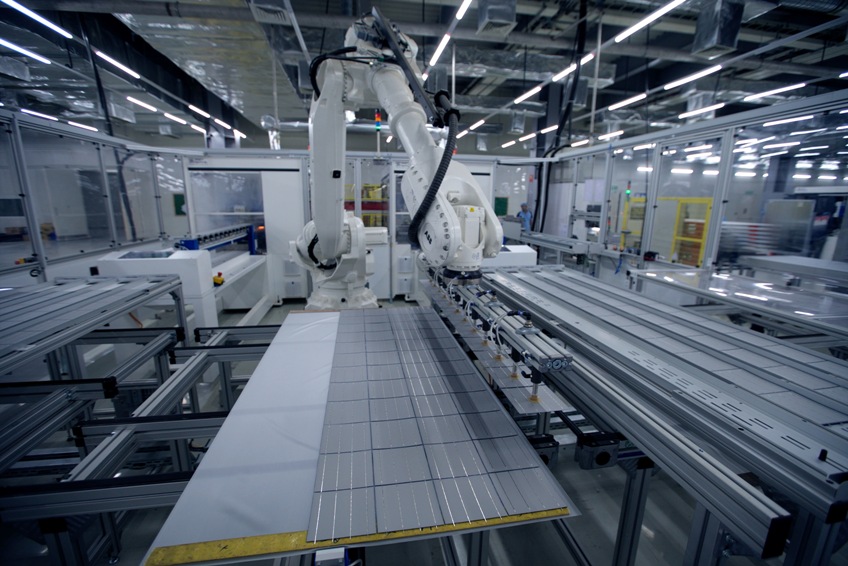The Cabinet, chaired by Prime Minister Narendra Modi, has approved the Ministry of New & Renewable Energy’s proposal for implementing a production linked incentive (PLI) scheme for high-efficiency solar photovoltaic modules.
Called “National Programme on High Efficiency Solar Photovoltaic Modules”, the programme will have an outlay of Rs.4,500 crore. The aim of the scheme is to achieve manufacturing capacity of gigawatt scale in high-efficiency solar PV modules.
A government release observed that solar capacity addition currently depends largely upon imported solar PV cells and modules as the domestic manufacturing industry has limited operational capacities of solar PV cells and modules. The National Programme on High Efficiency Solar PV Modules will reduce import dependence in a strategic sector like electricity. It will also support the Atmanirbhar Bharat initiative, the release added.
How it works
Solar PV manufacturers will be selected through a transparent competitive bidding process. PLI will be disbursed for five years post commissioning of solar PV manufacturing plants, on sales of high efficiency solar PV modules. Manufacturers will be rewarded for higher efficiencies of solar PV modules and also for sourcing their material from the domestic market. Thus, the PLI amount will increase with increased module efficiency and higher local value addition.
What India expects
The outcomes expected from the scheme are:
- Additional 10,000 mw capacity of integrated solar PV manufacturing plants
- Direct investment of around Rs.17,200 crore in solar PV manufacturing projects
- Demand of Rs.17,500 crore over five years for ‘Balance of Materials’
- Direct employment of about 30,000 and indirect employment of about1,20,000 persons
- Import substitution of around Rs.17,500 crore every year
- Impetus to R&D to achieve higher efficiency in solar PV modules
Industry Reactions to PLI Scheme
Significant step
With India on the brink of a solar-powered revolution, the government’s PLI scheme is a significant step, observed Dr. Hitesh Doshi, Chairman and Managing Director, Waaree Group. He said that the scheme will steer domestic manufacturing companies in the right direction and will give impetus to the Indian solar sector to shore up production capacity. This will stimulate economic and sector-wide growth.
Solar sector is highly dependent on imports, which pose risks in supply-chain resilience. The PLI scheme will make India become self-sufficient and self-reliant and while it puts the spotlight on domestic manufacturers, it will also make the country a key global supplier. By diverting demand to India, the domestic manufacturers will get the much-needed confidence to invest in expanding capacity. It will make the sector more operational and accessible to foreign players and enable solar manufacturers to help government achieve its clean energy targets, Doshi added.
Also read: Vikram Solar Introduces Next-Generation Higher Efficiency Series 6 PV Modules
Government support reiterated
Responding to the PLI scheme announcement, Gyanesh Chaudhary, Managing Director, Vikram Solar, said, “This is a welcome move that reiterates the government’s intent supported with policy actions to enable an ‘Aatmanirbhar Bharat’. The PLI scheme with an outlay of Rs.4,500 crore for higher efficiency solar PV modules will boost domestic manufacturing, job-creation, attract investments and reduce solar imports. With this decisive step towards creating a self-sustaining ecosystem for solar equipment manufacturing in India, we are confident that India is well-poised to become the manufacturing hub for renewable energy technologies.”
PLI scheme with BCD can boost solar sector
According to Animesh A Damani, Managing Partner, Artha Energy Resources, “The PLI scheme in addition to the already announced BCD will provide an impetus to the manufacturing segment in India. However, the government must take strict measures to also introduce production of other supporting materials (such as glass, EVA, backsheet etc) required to build solar PV modules in India. While the fine print is yet to be assessed, we hope that efficient measures are being put in place to ensure price parity and easy accessibility to cater to the booming demand in the C&I segment. Moreover, as Indian PV manufacturers currently meet only 10-20 per cent of the annual domestic demand, the pace of kick-starting domestic manufacturing is of paramount importance. We look forward to a swift and effective roll-out of the scheme.”
(Featured photograph, sourced from Adani Solar, is for representation only)

